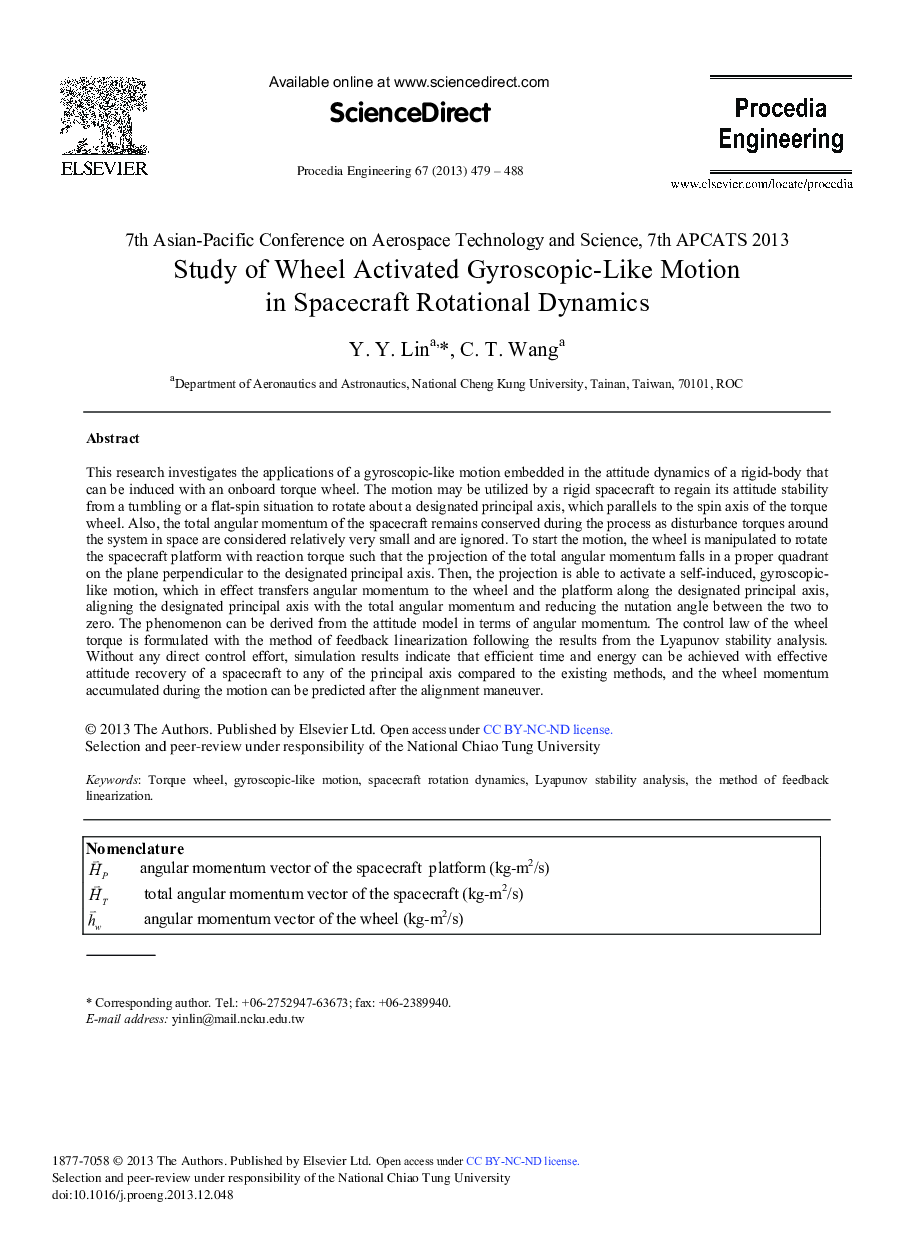| کد مقاله | کد نشریه | سال انتشار | مقاله انگلیسی | نسخه تمام متن |
|---|---|---|---|---|
| 858737 | 1470759 | 2013 | 10 صفحه PDF | دانلود رایگان |

This research investigates the applications of a gyroscopic-like motion embedded in the attitude dynamics of a rigid-body that can be induced with an onboard torque wheel. The motion may be utilized by a rigid spacecraft to regain its attitude stability from a tumbling or a flat-spin situation to rotate about a designated principal axis, which parallels to the spin axis of the torque wheel. Also, the total angular momentum of the spacecraft remains conserved during the process as disturbance torques around the system in space are considered relatively very small and are ignored. To start the motion, the wheel is manipulated to rotate the spacecraft platform with reaction torque such that the projection of the total angular momentum falls in a proper quadrant on the plane perpendicular to the designated principal axis. Then, the projection is able to activate a self-induced, gyroscopic- like motion, which in effect transfers angular momentum to the wheel and the platform along the designated principal axis, aligning the designated principal axis with the total angular momentum and reducing the nutation angle between the two to zero. The phenomenon can be derived from the attitude model in terms of angular momentum. The control law of the wheel torque is formulated with the method of feedback linearization following the results from the Lyapunov stability analysis. Without any direct control effort, simulation results indicate that efficient time and energy can be achieved with effective attitude recovery of a spacecraft to any of the principal axis compared to the existing methods, and the wheel momentum accumulated during the motion can be predicted after the alignment maneuver.
Journal: Procedia Engineering - Volume 67, 2013, Pages 479-488